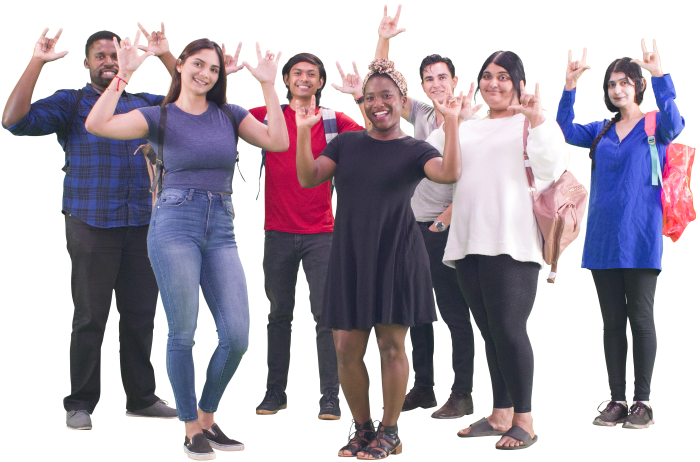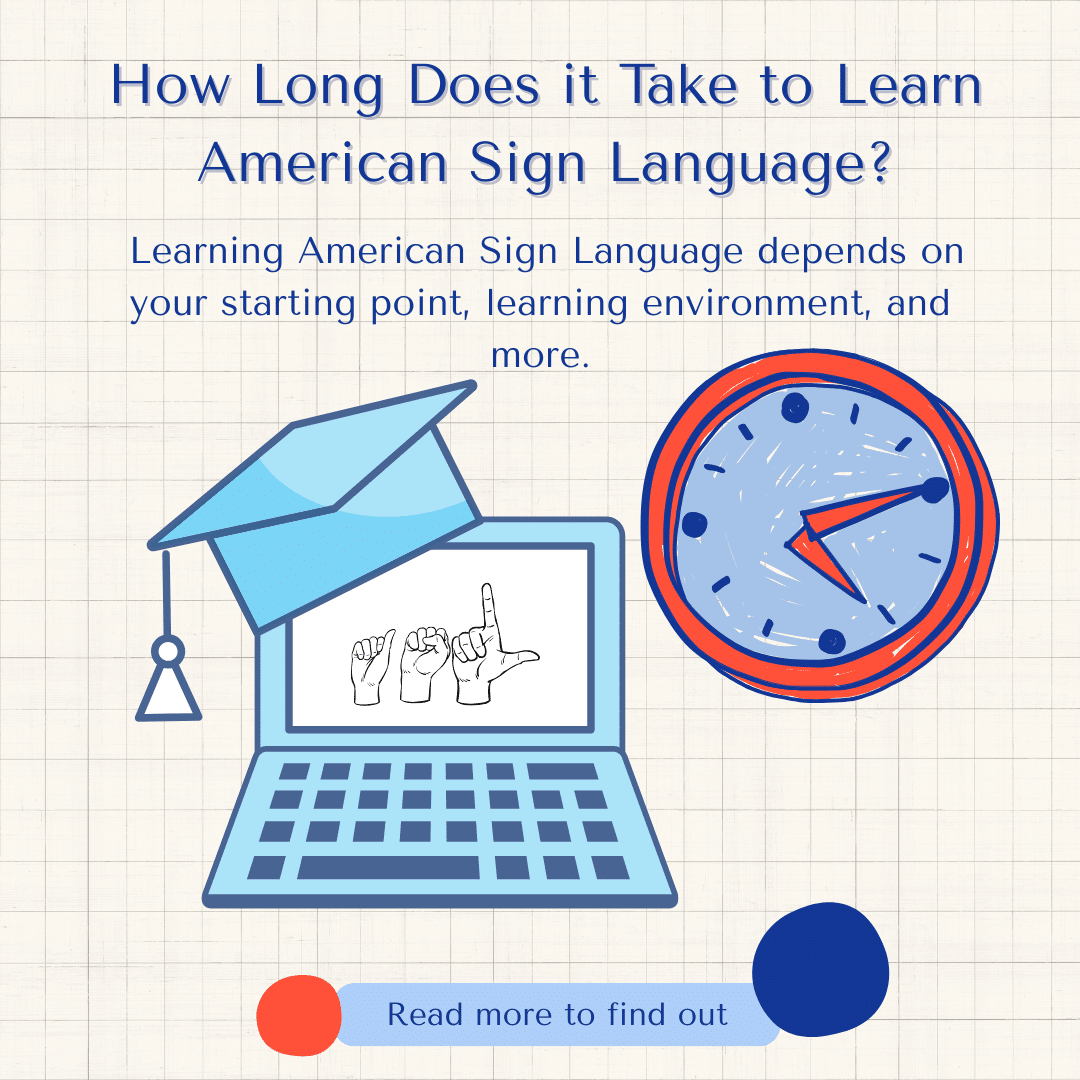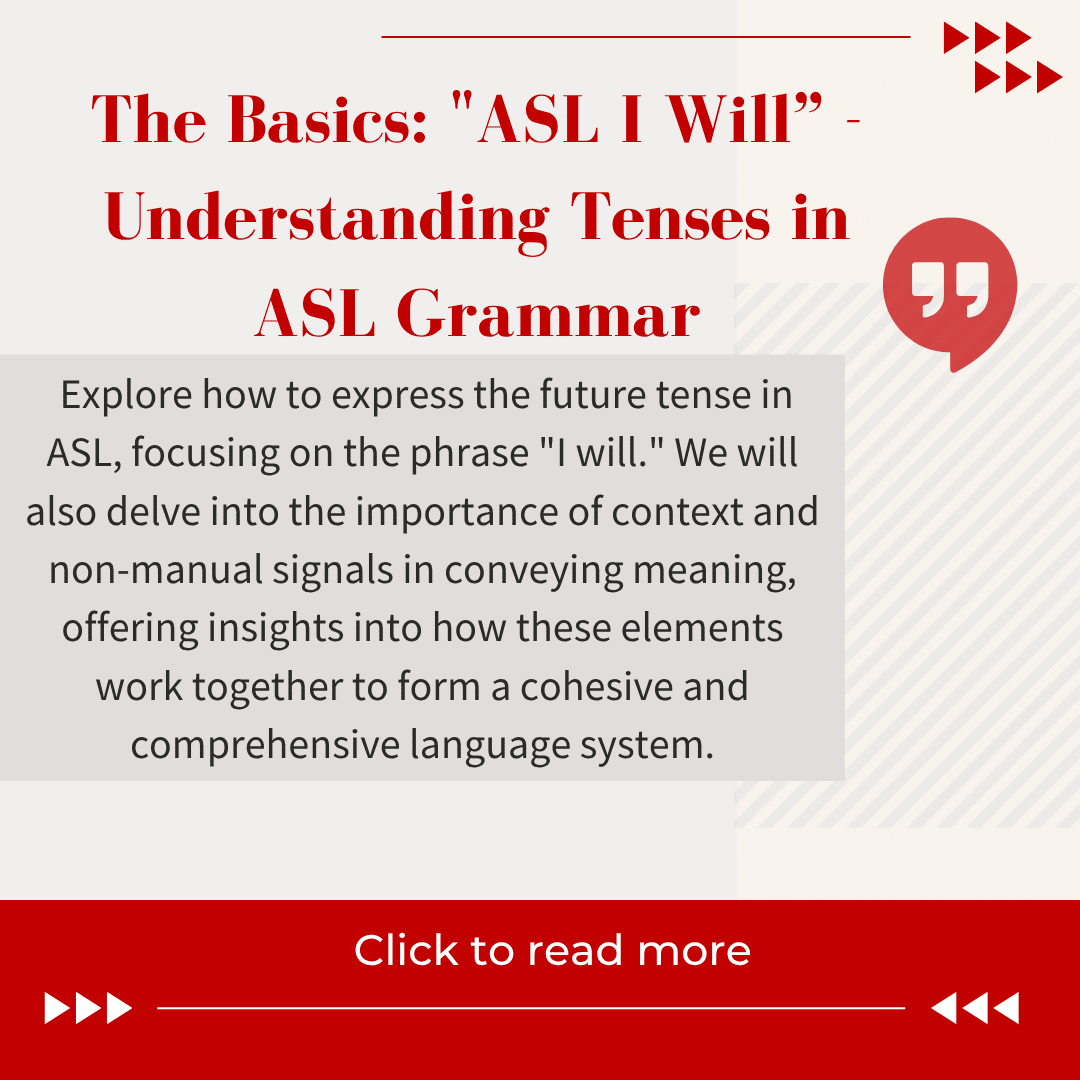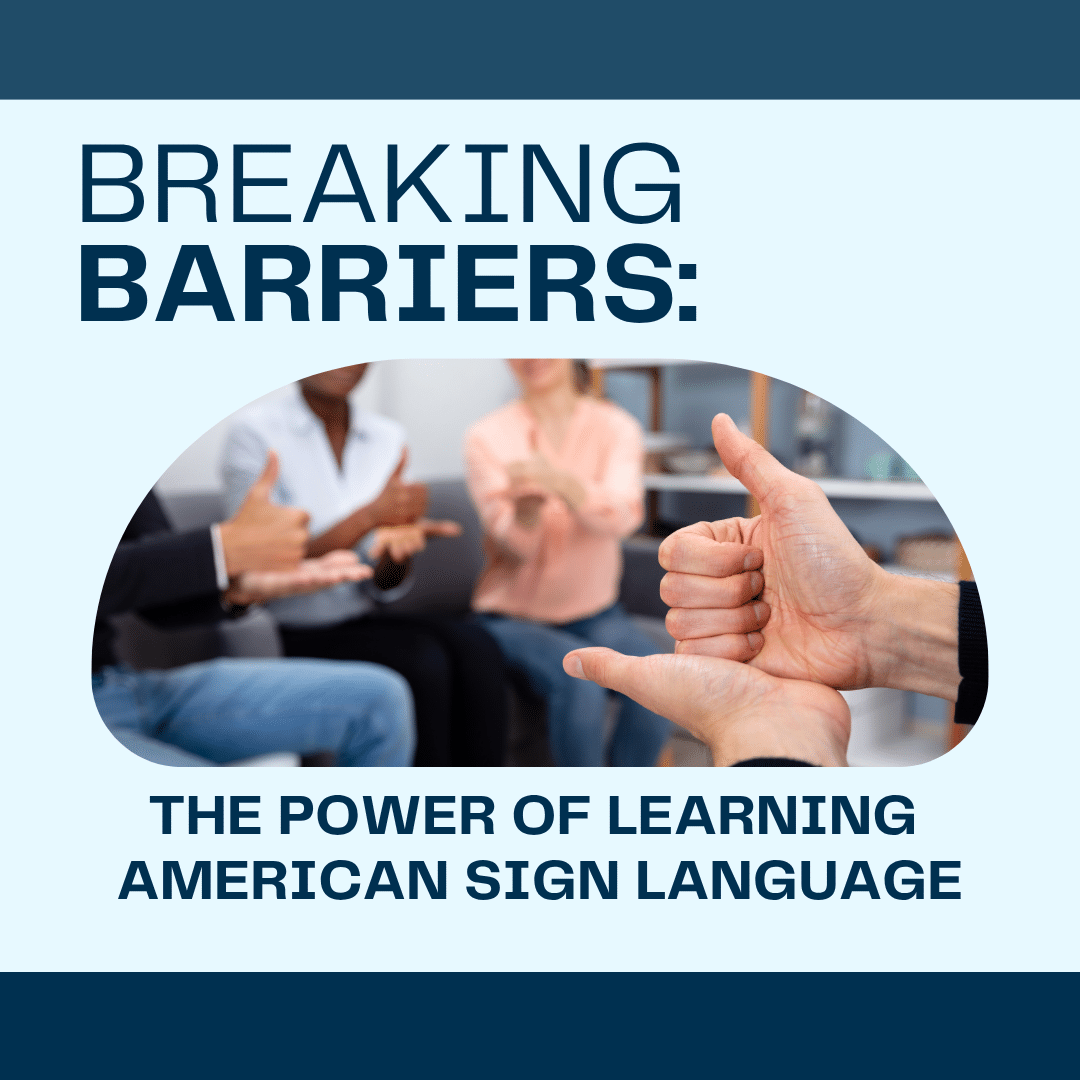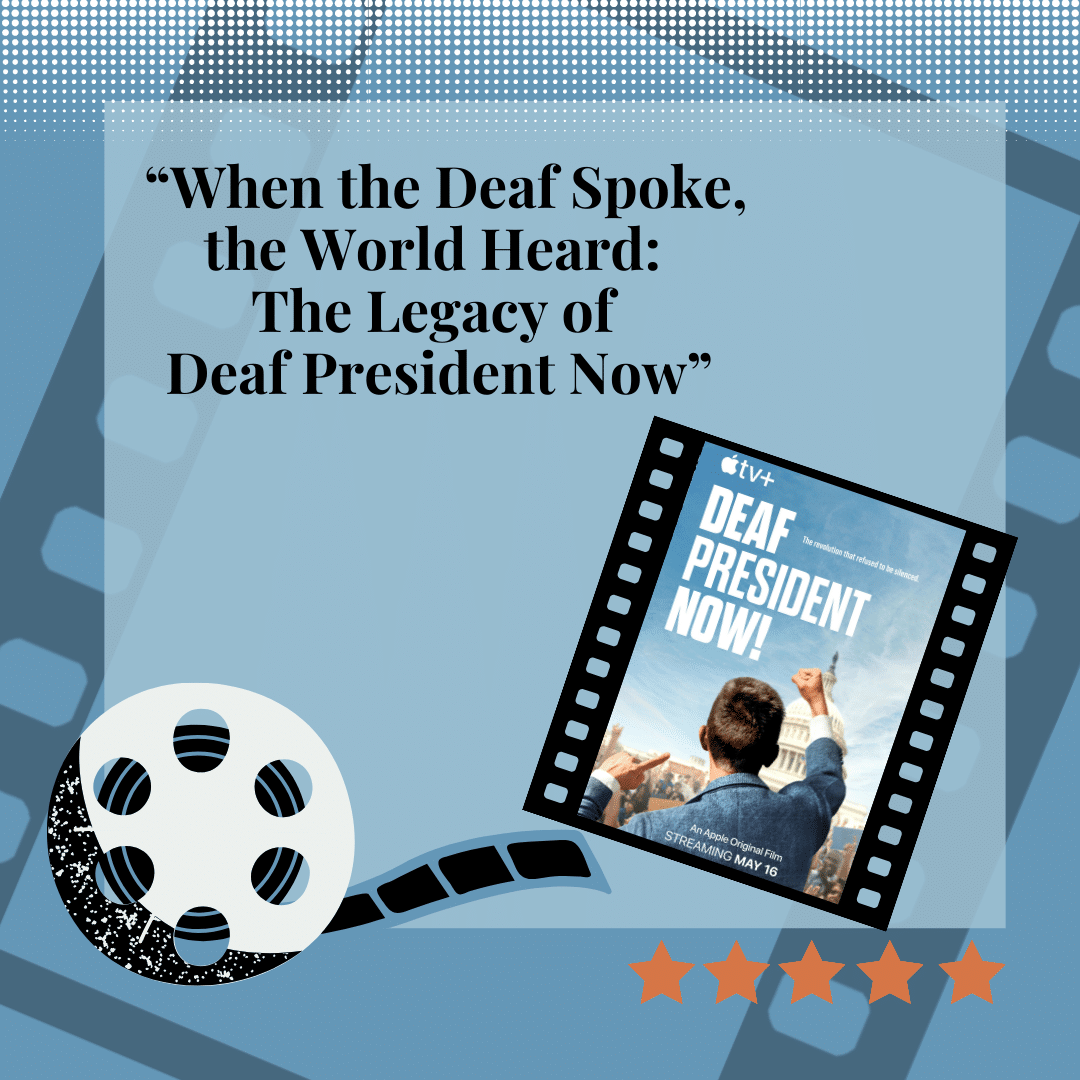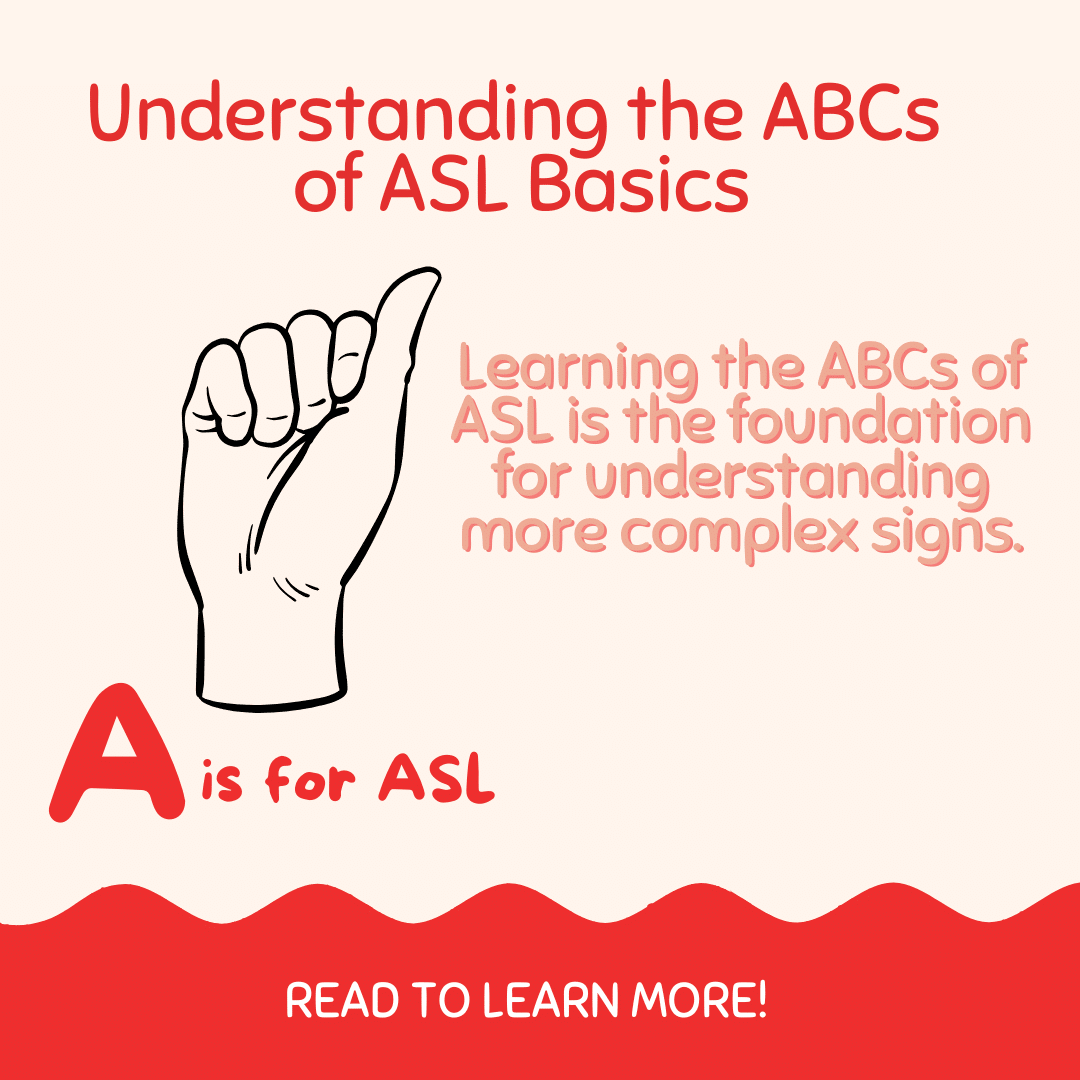
The Role of Deaf Directors of Artistic Sign Language (DASL) in Entertainment
- by Start ASL
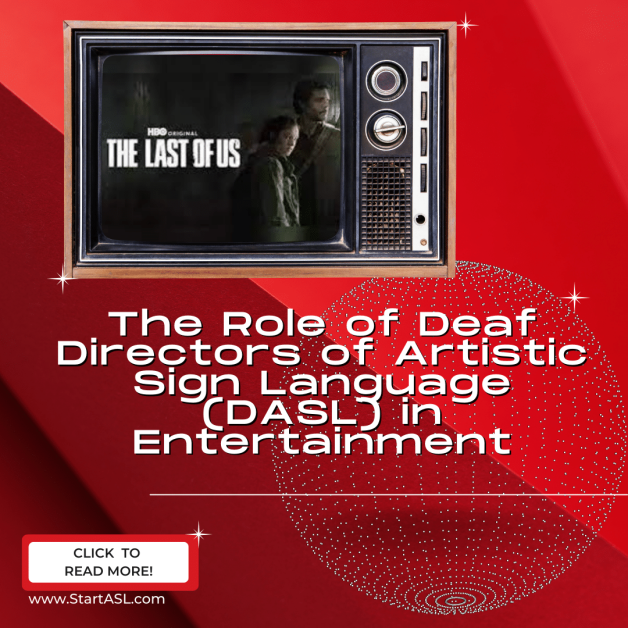
 There is a new thing happening in Hollywood, and it’s all about access for the Deaf Community! Have you seen the Barbie movie with ASL performers on the screen? Or maybe you have heard of Moana with an ASL Performer. This is a step in the right direction.
There is a new thing happening in Hollywood, and it’s all about access for the Deaf Community! Have you seen the Barbie movie with ASL performers on the screen? Or maybe you have heard of Moana with an ASL Performer. This is a step in the right direction.
In Hollywood, there are DASLs –Directors of Artistic Sign Language–who work with the crew and cast to make sure American Sign Language is incorporated correctly on screen. For example, in Hollywood, the role of Director of Artistic Sign Language (DASL) is crucial for ensuring authentic representation of Deaf culture and American Sign Language (ASL) in film and television productions. These professionals collaborate closely with directors, actors, and production teams from the outset to integrate ASL seamlessly into storytelling.
A Director of Artistic Sign Language (DASL) is a Deaf professional who ensures that American Sign Language (ASL) is integrated authentically and effectively into theatrical or film productions. This role is crucial for maintaining cultural accuracy and enhancing storytelling through ASL. (Reference 1)
Role and Responsibilities of a DASL
The DASL collaborates closely with the creative team to: (Reference 2)
- Translate scripts into ASL, considering both linguistic and cultural nuances.
- Coach Deaf and hearing actors on ASL performance, ensuring clarity and expressiveness.
- Advise on staging and blocking to optimize visual storytelling and maintain the integrity of sign language.(Reference 3)
- Ensure the physical well-being of performers by promoting safe signing practices during rehearsals and performances. (Reference 4)
This role is vital in productions that aim to authentically represent Deaf culture and language.
Notable DASLs in the Industry
- Michelle Mary Schaefer: An experienced DASL who has worked on productions like Spring Awakening and Fun Home. She is also an ASL consultant for various plays and films.(Reference 5)
- Joshua Castille: A Deaf actor and DASL known for his work in translating scripts into ASL and coaching actors to deliver authentic performances. (Reference 6)
- Jules Dameron: Director of the ASL version of “Let It Go,” showcasing her expertise in translating songs into ASL with artistic flair. (Reference 7)
- Kailyn Aaron-Lozano: An Afro-Latine multimedia artist and DASL, Aaron-Lozano has contributed to projects such as Sesame Street Workshop’s ASL music videos, DPAN’s Reverse Polarity, and AT&T’s Different Colors. She co-authored the article “Sign Language Music Videos: Language Preservation or Appropriation?” and serves as the DASL for the 2023 Deaf Spotlight Festival.
- CJ Jones: A Deaf actor, director, and advocate, Jones has worked as a DASL on various series for platforms like HBO and Hulu. Notably, he created the Na’vi Sign Language (NSL) for Avatar: The Way of Water, collaborating closely with director James Cameron.
Also, more popular movies have DASLs as part of the crew.
CODA (2021): Directed by Siân Heder, this film features a predominantly Deaf cast and includes significant ASL dialogue. Heder worked alongside ASL experts Alexandria Wailes and Anne Tomasetti to ensure authenticity. The film’s success highlighted the importance of Deaf representation in cinema.
A Quiet Place (2018): In this thriller, Deaf actress Millicent Simmonds’ ASL gestures were so expressive that director John Krasinski incorporated them into the film’s visual storytelling. The production team collaborated closely with Simmonds to ensure accurate and respectful use of ASL.
Importance of Hiring a DASL
Engaging a DASL from the outset of a project ensures that ASL is not merely an add-on but an integral part of the storytelling process. Their involvement enriches the narrative, provides authentic representation, and fosters inclusivity for Deaf audiences.
A DASL’s role extends beyond translation; they are cultural consultants who ensure that ASL is used authentically and respectfully. Their involvement is essential from the planning stages through to post-production, facilitating accurate portrayal of Deaf characters and stories. Their expertise helps bridge the gap between Deaf and hearing communities, fostering inclusivity in the entertainment industry.
There is a growing number of TV shows and films that have incorporated picture-in-picture American Sign Language (ASL) interpreting that involve Directors of ASL (DASL). One of the most recent examples of ASL with picture-in-picture roles is The Last of Us.
The Last of Us is an acclaimed post-apocalyptic drama series on HBO, adapted from the 2013 video game by Naughty Dog. The show follows Joel (Pedro Pascal), a hardened survivor, and Ellie (Bella Ramsey), a teenage girl immune to a deadly fungal infection that has ravaged humanity. Their journey across the desolate United States explores themes of survival, loss, and the human condition.
The series is co-created by Craig Mazin (Chernobyl) and Neil Druckmann, who co-wrote and co-directed the original games. The score is composed by Gustavo Santaolalla, who also contributed to the games. Filming for Season 2 took place in British Columbia from February to August 2024. Warner Bros. Discovery (WBD) has significantly enhanced accessibility for Deaf and hard-of-hearing audiences through its streaming platform, Max. The company has introduced American Sign Language (ASL) versions of several major titles, marking a substantial step toward inclusive entertainment. According to IMDB, HBO Max is the distributor of this show via warnermedia.com. HBO Max is Warner Brother’s streaming platform. The ASL access edition and this ASL edition can be seen on HBO and streamed on Max.
Leila Hanaumi had the opportunity to be the DASL for the Last of Us TV show which yielded picture-in-picture ASL interpreted seasons of this show carried by Deaf ASL performers. She was also one of the ASL performers in various episodes in the ASL edition, and she directed actors like Daniel Durant as well. Leila Hanaumi is a Deaf multidisciplinary creator, educator, and advocate who has significantly contributed to enhancing accessibility and representation for the Deaf community, particularly in the realms of film, education, and personal development.
Advocacy in Film Accessibility
Hanaumi gained prominence for her role as the American Sign Language (ASL) performer for the 2023 film Barbie, which was released with ASL accessibility on Max. She collaborated with actress Margot Robbie during a special community screening in Los Angeles, emphasizing the importance of simultaneous ASL integration in mainstream films. Margot Robbie is an Australian actress and producer renowned for her dynamic performances across a range of genres. Born on July 2, 1990, in Dalby, Queensland, she began her career in 2008 with a role in the Australian soap opera Neighbours. Her international breakthrough came in 2013 with Martin Scorsese’s The Wolf of Wall Street, where she starred alongside Leonardo DiCaprio. Hanaumi noted that the film industry is evolving to better support Deaf accessibility, setting a new standard for future productions. (Reference 8)
Educational Leadership and Advocacy
A graduate of Gallaudet University, Hanaumi has been actively involved in advocating for higher education and employment opportunities for Deaf individuals. She testified before the U.S. Senate Committee on Health, Education, Labor and Pensions, highlighting the critical role of institutions like Gallaudet in providing resources and opportunities for Deaf students. (Reference 9)
Additionally, Hanaumi participated in the 2019 Deaf Women of Color conference, where she engaged in workshops and discussions aimed at empowering Deaf women of color within the community. (Reference 10)
Personal Development and Creative Workshops
Beyond her advocacy work, Hanaumi co-hosted a Dream Board workshop in January 2025, focusing on visualization and manifestation techniques. Conducted entirely in ASL, the workshop aimed to help participants align their mindset with their aspirations, fostering a positive and uplifting environment. (Reference 11)
Community Engagement and Film Projects
During the COVID-19 pandemic, Hanaumi co-created the Human Actually film series, which explored the human experience through the lens of Deaf filmmakers. The series addressed themes from Maslow’s Hierarchy of Needs, providing a platform for Deaf voices to share their stories and perspectives. (Reference 12)
Leila Hanaumi continues to be a pivotal figure in advocating for Deaf representation and accessibility, utilizing her diverse talents to inspire and empower the community.
Hanaumi and her husband hosted a screening of one episode featuring Daniel Durant translating the Last of Us episode at the Civil Rights Institute Inland Southern California in Riverside to allow members of the Deaf community to see the episode. Daniel Durant is a Deaf actor celebrated for his impactful performances on stage and screen. Durant attended the Minnesota State Academy for the Deaf and later pursued higher education at the Rochester Institute of Technology and Gallaudet University.
Warner Bros. Discovery has made significant strides in enhancing American Sign Language (ASL) accessibility on its streaming platform, Max. This initiative aims to provide a
more inclusive viewing experience for Deaf and hard-of-hearing audiences. (Reference 13)
ASL Content on Max
Max has introduced ASL versions for several major titles, including(Reference 14)
- The Last of Us (Seasons 1 and 2)
- Barbie
- Godzilla x Kong: The New Empire
- Beetlejuice Beetlejuice(Reference 15)
These ASL versions are performed by professional Deaf artists such as Daniel Durant (CODA) and Leila Hanaumi, with Hanaumi also directing the ASL adaptation for The Last of Us .(Reference 16)
How to Find ASL Content on Max
To locate ASL-enabled titles:
- Open the Max app or website.
- Use the search function and enter “ASL.”
- Look for titles marked with a special ASL badge and key art featuring the sign language symbol.(Reference 17)
Additional Accessibility Features
Max also supports: Max
- Closed captions
- Audio descriptions
- Screen reader compatibility
- Keyboard navigation
- Alexa voice commands
- Photosensitivity warnings
In conclusion, the rise of Deaf Directors of Artistic Sign Language (DASLs) in the entertainment industry marks a transformative shift toward genuine inclusion and cultural authenticity. These professionals play a vital role in ensuring that American Sign Language is accurately and respectfully integrated into films and television, enriching storytelling and enhancing accessibility for Deaf and hard-of-hearing audiences. Through the work of influential DASLs like Leila Hanaumi, Michelle Mary Schaefer, and CJ Jones, major productions such as The Last of Us, Barbie, and CODA have set new standards for inclusive media. With streaming platforms like Max offering ASL-accessible content, the entertainment industry is moving closer to equitable representation—amplifying Deaf voices and paving the way for future generations of Deaf creatives.
References:
- Bho5+1Sign Language Center+1
- Bho5+1New York City Center+1
- Joshua Castille+6Rebecca Anne Withey+6ASL with Andrew+6
- The Guardian+1ASL with Andrew+1
- Bho5+2MichelleMarySchaefer+2Wikipedia+2
- Joshua Castille
- Rebecca Anne Withey
- The Daily Moth
- Gallaudet University+3Gallaudet University+3GovInfo+3
- The Daily Moth
- Gallaudet University+2Deaf Academy+2The Express+2
- KSBY News
- Polygon
- Pressroom+4EW.com+4Pressroom+4
- Polygon+2Max+2EW.com+2Max+6Polygon+6Pressroom+6EW.com+2Pressroom+2Polygon+2
- Polygon+1EW.com+1
- Pressroom+2Max+2Max+2Pressroom+2Pressparty+2Pressroom+2
Start Learning ASL Today!
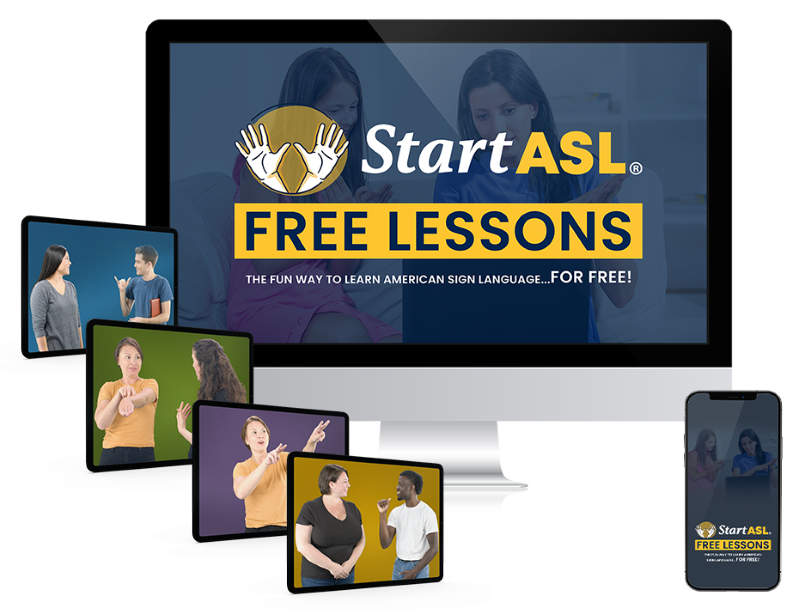 Ready to start learning real American Sign Language and not just basic signs? Do you want to be a part of the vibrant Deaf community? Check out our Free ASL 1 Course or our Complete 4-Level ASL Course options and start learning ASL today!
Ready to start learning real American Sign Language and not just basic signs? Do you want to be a part of the vibrant Deaf community? Check out our Free ASL 1 Course or our Complete 4-Level ASL Course options and start learning ASL today!
